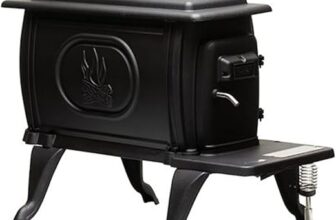
This step-by-step guide on packing the REI Co-op Trailbreak Sleeping Bag for backpacking provides essential techniques to ensure efficient transport and optimal space management. It highlights the importance of proper folding and rolling methods to minimize bulk and maximize space in your backpack. The guide includes tips on protecting the bag’s insulation, securing it within a stuff sack, and organizing your gear for easy access during your outdoor adventures. With these instructions, backpackers can achieve a compact and well-organized pack, allowing for a more enjoyable hiking experience.



Backpack Packing Guide || REI
Gather Your Materials
Gather your REI Co-op Trailbreak Sleeping Bag and assess its condition; ensure it is clean and free from any debris. If the bag came with a compression sack, locate it now. This will help you save space in your backpack and maintain the integrity of the sleeping bag. If you do not have a compression sack, consider acquiring one or using an alternative that can reduce bulk.
Confirm you have additional packing materials on hand, such as:
- A stuff sack or dry bag for your clothes
- Ziplock bags for toiletries and snacks
- Extra straps or cords for securing items
Organize these materials in a designated area to streamline the packing process. By having everything out and ready, you can efficiently move through your packing checklist, staying organized and maximizing space for other essentials in your backpack.
Lay Out the Sleeping Bag
Unzip the sleeping bag completely and lay it out flat on a clean surface. This allows for easy access to all components and tidies up any folded areas, making it simpler to organize for packing later.
- Ensure the surface is free of dirt and sharp objects to prevent damage to the sleeping bag fabric.
- Spread the sleeping bag fully, ensuring that the lining and outer fabric are unwrinkled for optimal compression.
- Check for any additional items within the bag’s pockets or compartments, such as a sleeping bag liner or any personal belongings.
- Smooth out any creases or kinks by gently pulling at the edges, creating a neat lay flat that makes future packing more efficient.
Remove Any Liners or Accessories
Remove any removable liner from your sleeping bag. Check all zippers and ensure that these components are fully detached. Avoid leaving the liner inside as it can add unnecessary bulk, making packing more challenging.
Take out any accessories like the stuff sack or sleeping bag liner. Place these items aside in a separate, designated area. Organize them for easy access when you are ready to pack. Securely fasten any loose straps or components to prevent them from tangling during storage.
Roll the Sleeping Bag
Starting at the foot of the bag, carefully roll it tightly towards the head. Begin by laying the sleeping bag flat on a clean surface, ensuring there are no twists or tangles in the fabric. Grasp the foot of the bag with both hands and fold it inwards slightly to create a tight, compact base. Then, keep your hands firm and roll the bag in a tight cylinder motion, smoothing out any wrinkles as you go. Continue this process, applying even pressure to maintain the tightness of the roll until you reach the head of the bag.
Once you have rolled it all the way up, use the attached compression straps or a storage sack if your sleeping bag comes with one. Secure the sleeping bag with the straps by pulling them tightly to prevent it from unraveling. This organized method not only maximizes space in your backpack but also protects the insulation within the bag, ensuring that it stays warm and comfortable for your next outdoor adventure. For example, consider comparing cluttered storage with efficient packing, like stuffing oversized clothes into a backpack versus neatly rolling them for an organized fit.
Place the Bag in the Compression Sack
Place the rolled sleeping bag inside the compression sack, ensuring that it fully fits within the compartment without any exposed parts. Start by locating the straps on the sides of the compression sack. Grasp the straps firmly and begin to cinch them down evenly. Apply gradual pressure as you pull each strap, ensuring that the bag compresses uniformly without bulging in any areas. Keep adjusting and pulling until the sleeping bag shrinks to your desired size.
Secure the straps in place once the sleeping bag has reached its compact form. Double-check that all the straps are tightened properly to prevent any accidental loosening during your travels. This step not only minimizes the space required in your backpack but also makes it easier to organize the rest of your gear around it.
Secure the Compression Sack
Secure the compression sack tightly around the compressed sleeping bag.
- Pull the straps tight, ensuring a snug fit to prevent any movement or shifting during transport.
- Fasten any buckles or clips that come with the compression sack to enhance security.
- Tuck away any loose straps or flaps that may hang out to avoid snagging on other gear in your backpack.
- Double-check the bag for stability by gently shaking it; the sleeping bag should remain securely in place.
Minimize potential damage by inspecting the compression sack for any signs of wear or tear before use. Keep the compression sack closed firmly throughout your trip to maintain the integrity of your sleeping bag and prevent moisture or dirt from entering.
Store in Your Backpack
Identify a suitable compartment in your backpack for storing the compression sack. Keep in mind that the best location is either at the bottom of your pack or in a specialized sleeping bag pocket, if your pack has one. By placing the compression sack in these areas, you help maintain the overall balance of your bag while hiking, which enhances comfort and stability during your trek.
Ensure the compression sack fits snugly within the chosen compartment. Pack it tightly to minimize shifting, which can cause discomfort or destabilization. If using the bottom of your backpack, position the compression sack first before adding other gear. This strategy helps create a solid base for your load. If your backpack features a designated sleeping bag pocket, slide the compression sack in horizontally to take advantage of the pocket’s contours, ensuring it doesn’t protrude or interfere with access to other items.
Final Packing Tips Inside
In conclusion, mastering the art of packing your REI Co-op Trailbreak Sleeping Bag is a key skill for any backpacker looking to optimize their gear organization and sleeping comfort. By following the outlined steps, you’ll ensure that your sleeping bag is efficiently packed, freeing up valuable space in your backpack for other essentials. With a well-prepared sleeping setup, you’re one step closer to enjoying a restful night’s sleep under the stars on your next outdoor journey. Happy backpacking!
Essential Packing Gear

Packing Made Easy
Essential Tips for Maximum Comfort and Performance in the Outdoors
- Choose the Right Temperature Rating: Before you head out, check the temperature rating of the sleeping bag to ensure it’s suitable for the conditions you’ll be camping in. This will help you stay warm and comfortable throughout the night
- Properly Pack and Unpack: When storing your sleeping bag for travel, use the provided stuff sack to compress it for easy transport. When you arrive at your campsite, unpack it and allow the bag to loft for a few minutes to regain its shape
- Set Up a Comfortable Sleeping Area: Find a flat and dry area to lay your sleeping pad and sleeping bag. This adds insulation from the ground and enhances comfort. Make sure to clear any debris like stones or branches
- Zipping and Unzipping: Practice zipping and unzipping your sleeping bag before your trip. To enter, simply unzip and slide in feet first. If it’s cold, use the drawstring collar to seal in warmth around your head
- Keep It Clean and Dry: To maintain your sleeping bag’s longevity, avoid putting it directly on the ground or getting it wet. Use a ground tarp or your tent floor. If it gets dirty, follow the care instructions for cleaning to keep it in top condition
- By following these tips, you can enjoy a comfortable night’s sleep in your REI Co-op Trailbreak Sleeping Bag!
Frequently Asked Questions about the REI Co-op Trailbreak Sleeping Bag
To properly care for and maintain a Trailbreak Sleeping Bag, follow these recommended washing and maintenance instructions:
- Check the Label: Always read the care label attached to your sleeping bag for specific washing instructions, as they may vary by brand and materials used.
- Washing:
- Machine Wash: If the label allows, use a front-loading washing machine to wash the sleeping bag on a gentle cycle with cold water. This helps prevent damage to the fabric and insulation.
- Detergent: Use a mild detergent that is free from bleach and fabric softeners, as these can break down the insulation and materials.
- Alternative Hand Washing: For more delicate sleeping bags, hand washing in a bathtub or large basin with cold water is a good option. Gently agitate without scrubbing.
- Drying:
- Tumble Dry: If machine drying is permitted, use a low heat setting and regularly check to avoid overheating. Adding a few clean tennis balls or dryer balls can help maintain loft by preventing clumps of insulation.
- Air Drying: Alternatively, air dry the sleeping bag by laying it flat on a clean, dry surface, away from direct sunlight or heat sources.
- Storage:
- Store the sleeping bag loosely in a large breathable storage sack or hang it in a closet to maintain its loft. Avoid stuffing it into a compression sack for long periods, as this can damage insulation.
- Ensure the sleeping bag is completely dry before storage to prevent mold and mildew growth.
- Regular Maintenance:
- Repair any snags or tears promptly using appropriate repair patches or sewing methods.
- Clean your sleeping bag regularly, especially after heavy use, to maintain its freshness and performance.
Following these care instructions will help extend the life of your Trailbreak Sleeping Bag and ensure it remains comfortable and functional for your next outdoor adventure.









Thanks for sharing! Stuffing is definitely a valid method and can save time. Just make sure to keep an eye on how you’re packing to avoid damaging the bag. Different strokes for different folks, right?
I’ve found that using a waterproof compression sack really helps when I’m backpacking in wet conditions. The REI Co-op Trailbreak Sleeping Bag is great, but if it gets wet, it loses its insulation. Anyone else using waterproof sacks?
Great tip! Keeping your gear dry is crucial, especially on longer trips. A waterproof compression sack really does help extend the life of your sleeping bag and keep you warm at night. Thanks for sharing that wisdom!
This guide is super helpful! I followed it before my last trip and it made packing so much easier. I love how compact my sleeping bag got. It’s like a space saver for my backpack! Also, a little tip: I always pack my sleeping bag at the bottom for better weight distribution.
Awesome to hear that you found the guide useful! Packing your sleeping bag at the bottom is a smart move for stability. Thanks for sharing your experience!
Just got back from a camping trip where I followed these steps. My REI Co-op Trailbreak Sleeping Bag packed down nicely, and I had plenty of space for my other gear. It was super comfy at night too! Highly recommend this packing method!
So glad to hear it worked out for you! It’s always a win when you can pack efficiently and still have a cozy night’s sleep. Thanks for sharing your success!
I’d recommend checking for any zippers or Velcro on the sleeping bag before packing. I once had a situation where my bag got caught in the zipper, and it was a nightmare. Just double-checking can save you some hassle later!
Definitely a wise tip! Zippers can be tricky, and it’s always better to be safe than sorry. Thanks for looking out for your fellow backpackers!
Hey, I usually just stuff my REI Co-op Trailbreak Sleeping Bag into the compression sack instead of rolling it. I find it quicker, and it still fits well in my backpack. Just make sure you don’t overstuff it or it can get bulky. Anyone else do this? What are your thoughts?